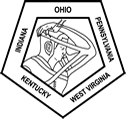<< Back to the abstract archive
Development of an In Vivo Rat Frostbite Model to Mitigate Injury Mechanisms and Enhance Wound Healing
Jose Antonio Arellano, MD; Naresh Mahajan, PhD; Alexa Hernandez del Rio, MD; Hilary Y Liu, BS; Samantha Bosco, BS; Asim Ejaz, PhD; Francesco M Egro, MD
University of Pittsburgh
2025-01-09
Presenter: Jose Antonio Arellano
Affidavit:
I certify that the material proposed for presentation in this abstract has not been published in any scientific journal or previously presented at a major meeting. All data is original and performed
Director Name: Vu T. Nguyen
Author Category: Fellow Plastic Surgery
Presentation Category: Basic Science Research
Abstract Category: General Reconstruction
Introduction
Frostbite is a severe cold-induced injury that causes significant tissue damage and morbidity. Despite clinical advancements, critical questions remain unanswered due to the lack of robust evidence and reliance on low-quality studies. A major barrier is the absence of a preclinical model replicating the freezing conditions and pathophysiology observed in human frostbite. A reliable model is needed to better understand injury mechanisms and assess potential treatments, paving the way for optimized therapeutic strategies.
Methods
Frostbite was induced in anesthetized rats by applying liquid nitrogen (LN₂) to the dorsal skin using a device that directs a jet of LN₂ at -196�C. Injury was induced for 10 seconds to produce partial-thickness damage or 20 seconds for full-thickness damage. Severity was confirmed through histology, with biopsies collected at 60 minutes, 3 days, and 7 days post-injury. Hematoxylin and eosin (HE) staining assessed general injury, while perilipin staining distinguished partial and full-thickness injuries. Masson�s trichrome staining evaluated collagen deposition, and TUNEL assay and qPCR assessed apoptotic pathways.
Results
Frostbite injury was successfully induced with liquid nitrogen for 10 seconds, showing morphological differences from the 20-second burn. HE staining revealed deeper damage in full-thickness injuries, confirmed by perilipin staining. Masson�s trichrome staining showed collagen deposition consistent with healing at days 3 and 7. TUNEL assay and qPCR detected increased caspase activity, confirming irreversible apoptotic cell death, particularly in full-thickness injuries.
Conclusion
This rat model reliably replicates human frostbite pathophysiology, differentiating partial and full-thickness injuries. It offers a robust platform for studying frostbite mechanisms and evaluating therapeutic strategies.



